Articles about Global UX
Remote User Research: Opportunities for Adoption in Asia

Language Intro (75 words) Introduction, translated into 5 languages Asia is experiencing a user research boom, with the number of professionals growing rapidly. However, remote research as a practice is still not widely accepted across all Asian countries, due in part to low awareness of tools available. To become successful, remote research platforms need to adapt to the diversity of potential recruits in Asia and make it easier for researchers to screen, schedule, and compensate participants, as well as complete translations seamlessly. [Read More]
Driver Assistance Systems: UX from a Safety Perspective
Driver assistance systems aim to enhance the convenience and safety of driving. This can be achieved through good UX design and considering cultural differences. [Read More]
UX in Southeast Asia: Examples Across Current UX Maturity Levels
The article explores the current state of UX in Southeast Asia and provides three examples from across the UX maturity spectrum. [Read More]
Cultural Dimensions of Chinese-American Websites
This article highlights the current state of UX in Southeast Asia and provides examples from across the UX maturity spectrum. [Read More]
Best Practices for Asian Language Site Localization
Localizing your site for Asia may mean a radically different design, brand-new elements, or country-specific SEO. [Read More]
Mechanical Turk: Quickly Scale Research Without Breaking the Bank

Through Mechanical Turk, user experience researchers can conduct quick, scalable, and budget-friendly studies, while testing a product’s accessibility and suitability for international audiences. [Read More]
Growth Development: A Chinese Chasing Game to More Users

Chinese technology companies like Weibo and Alibaba are using UX to scale their businesses by turning their customer base into a fan base. [Read More]
Collaborating Across Cultures: Designing UX Studies for Japan

Designing global research requires being sensitive to cultural differences. Tokyo-based researchers, who often partner with international clients, share tips on conducting UX studies in Japan. [Read More]
Tracking User Behavior with Big Data: A Model for Detecting Pain Points in the User Experience

A combination of strategic quantitative tracking and qualitative follow-up can reveal hidden problems within a product that have meaningful business and user experience implications. [Read More]
Keep Asking “Why?” Curiosity, Delighting in Difference in Asia

Staying curious and hungry for new clues to context helps UX designers to build empathy with users and create intuitive solutions that address individual needs and aspirations. [Read More]
Memoir Monopoly: Improving Rehabilitation Activities for Elderly People with Dementia

Researchers in Taiwan have developed a software-based therapeutic activity to aid the rehabilitation of the growing number of people worldwide with dementia and Alzheimer’s. [Read More]
Want Civility? Build Community

Interfaces that facilitate community over the network can enrich the quality of social interaction. This can only be good for everybody. [Read More]
Avoiding Narcissus: Finding inspiration in Unusual Places (Book Review)
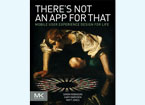
A review of There’s Not an App for That by Robinson, Marsden & Jones. Think deeply about the way you design and how you might do it differently [Read More]
Go Holistic: Assess the Maturity of Your Organization Via the Customer Experience

Industry leaders focus on the big picture: the end-to-end customer journey or experience. Here’s how to gauge the level of CX development in your organization. [Read More]
From Local Context to Global Design (Book Review)
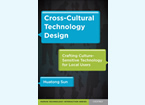
A review of Cross-Cultural Technology Design, Huatong Sun. This book examines the challenge of understanding cultural expectations and local context. [Read More]
Mobile Apps for Emerging Markets: Reaching an Audience of 215 Million

Designing mobile apps for emerging markets with more than 60 languages and 215 million people requires a balance of designing, technology, user experience, and simplicity. [Read More]
How the Other Half Live: UX Design in Brazil and New Zealand
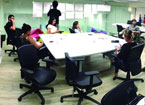
Insights on global UX research from eight UX professionals in Brazil and New Zealand. Research tools, favorite resources, and love of the work are shared in these two very disparate countries. [Read More]
The State of UX: Voices from South America

The UX field is starting to develop in South America despite the challenges of cultural diversity within the region. UX specialists in some countries are creating regional groups to host events and build communities. [Read More]
Ten Ways to Transcend Culture: Making Users’ Choices Easier

When you understand the cultural cues that support decision-making, you can make a site easier to use. (Full article available in English and Español) [Read More]
UX Research in the Top 3 Economies in Latin America: What You Should Know

Learn how to effectively conduct UX research in Brazil, Colombia, and Mexico including tips for screening, translation, running the study, observation, and interface design. [Read More]
Website Translation: Deciding How and What to Translate

With the growth of global websites designed for mobile access, translating website content into multiple languages is becoming more important, especially for global businesses. [Read More]
A Design Workshop in Lima, Peru: Teaching a Creative Process
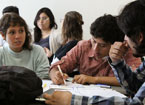
In April 2014, UX researchers from MIT led a UX design workshop for participants from local creative industries in Lima, Peru. They introduced key techniques for research, ideation, concept development, and refinement. [Read More]
Questions to Ask in Omni-Channel UX Research: Insights from a Mobile Wallet Study in Sao Paulo

Omni-channel research for a mobile wallet study in Brazil reveals key research questions to ask to ensure you are identifying cultural nuances. (Full article available in English and Español) [Read More]
Designing an Arabic User Interface: Methods and Techniques for Bridging Cultures

Designing an effective Arabic user experience by understanding how cultural and linguistic issues are tightly woven together. UX designers became "cultural translators." [Read More]
UX Goes Global (Book Review)

A review of Global UX: Research and Design in a Connected World by Whitney Quesenbery and Daniel Szuc, and The Handbook of Global User Research by Robert Schumacher. [Read More]
Sketchnote: The World Until Yesterday – What We Can Learn from Traditional Societies
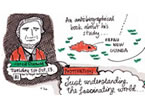
Our intrepid sketchnoter attended a talk by Jared Diamond, author of popular science books and sketched what she learned about traditional societies. [Read More]
Videoconferencing: Overcoming the Tyranny of Distance
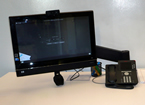
A study of remote collaboration within Google teams concluded that ubiquitous video conferencing has helped to overcome many challenges facing geographically distributed teams. [Read More]
Lost in Translation: Communicating the Subtleties of Design across Borders
Changes in team processes, behaviors, and schedules can improve communication among teams in different places, ensuring that subtleties of design don’t get lost. [Read More]
Unconventional Opportunities for UX: The BRICS and Beyond
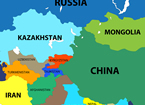
As western culture increasingly values socially minded ventures, user experience professionals can help solve common problems experienced in developing countries. [Read More]
On the Edge: Beyond UX in Western Science Fiction
Asian sci-fi is inspired by classic Western novels as well as native literary traditions. Chinese, Indian, and Japanese approaches reveal creations based on different cultures. [Read More]
Beyond Global: Exploring the Regional UX Opportunity
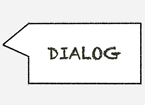
Taiwan’s UX development suggests a way to advocate within the unique needs of a geographical region’s business context, while still learning from global experience. [Read More]
Mobile Money for Financial Inclusion in India
Mobile technologies will play a pivotal role in realizing universal access to banking services, but there are many more challenges ahead. What's next for UX designers? [Read More]
Ghana Calling: Dust, Multiple SIMs, and Music Sharing

Everyday mobile phone use in Accra, Ghana, has some unique challenges, but it is similar to mobile phone use in other parts of the world. [Read More]
A Design Method for BOP Users: Products for Social Innovation

When developing products for 90 percent of the world, in order to create acceptable devices, designers need to resolve belief conflicts between themselves and target users. [Read More]
Designing on Mars: Participatory Design and Training in Very Unfamiliar Environments

Gathering information in an unfamiliar cultural context is time-consuming. Described here is the technique adopted by a team of the Madeira Interactive Technologies Institute (M-ITI) in response. [Read More]
Let’s Talk UX: Communication in UX Design
UX training should address the cultural and social aspects of communication in order to create communicators who make a positive impact. [Read More]
Language Barriers in Healthcare Information: Communicating with Bilingual Users
When adapting online health information for Latinos, employ “transcreation” or adaptation based on design guidelines that encompass cultural and linguistic needs, rather than just translation. [Read More]
Around the Globe: Lab Research in the United States and Europe
Those who do international field work need to become experts in the differences in research methodology from one culture to the next. [Read More]
Stepping In: An Outsider’s Guide to Crossing the Digital Divide

"Bridging the Global Digital Divide" teams are looking at new interaction technologies and design practices for users whose lives could be transformed by advances in computing and communication. [Read More]
Global Usability Testing: How to plan and report tests in multiple locations
The success of moderated usability testing of a product in several countries in a short time is depends on careful planning and preparation. [Read More]
A Mandate for Usability: A Mexican manifesto on usability and accessibility for government websites

Discussion of the signing of the “Manifesto on Usability and Accessibility for Mexican Government Websites” at the conclusion of the Usability and Accessibility for the Web International Seminar (UA Web 2007). [Read More]
¿Habla Español?: Testing and Designing for U.S. Latino Users

This article discusses a series of cross-cultural usability studies run with Spanish speaking immigrants to the U.S., looking in particular at their special characteristics and challenges. [Read More]
Design Competitions Succeed in Spreading the Usability Message
World Usability Day 2006 festivities varied with social and professional cultures that celebrated the day. Several cities organized design competitions to redesign existing systems that maximize usability. [Read More]
Creating a Global Team and a Global Infrastructure
With events across forty countries and five continents, outstanding media coverage, and feedback from organizers and volunteers, World Usability Day 2006 were deemed a huge success. [Read More]
A World Usability Day Case Study: Conducting Multinational Expert Reviews
For international organizations, feedback from users at the local level is essential to product success. Organizing multinational events and sharing the results can help achieve business goals. [Read More]
COMMUNICATION GAP: Designing an Interface for Chinese Migrant Workers
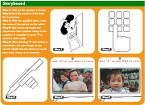
China has many possibilities when designing for emerging markets, for example, improving the quality of communication between migrant worker parents and their children. [Read More]
Usability Practice in China: An Update
Since the study of user experience is a source for technological innovation and building a human-centered society, we expect a bright future for usability in China. [Read More]
Usability Opportunities in China
China has advanced rapidly in the usability field. In several senses, China has opened up to the world, and opportunities are there for the global usability professional community. [Read More]
Usability Engineering in Hong Kong
Because usability is at its beginning stages in Hong Kong, there are great opportunities here to learn more about Eastern users and their needs. [Read More]
Usability Engineering in Japan

There is a long history of usability testing, in practice if not in name, in Japan. Professional organizations for usability, outside of the academic context, are just taking off. [Read More]

